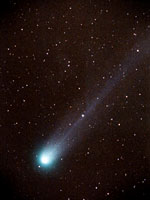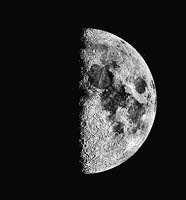| Elorian Calendar and the Night Sky |
| The peoples of Eloria run two calendar systems, depending on whether one is in Khand or the rest of the world. They both have the same months, days and dates, but the Khandish Calendar is offset by 1,453 before the West, for this is when Khand claims dominion as an empire under the first emperor, Cyris the Great. The rest of the world denotes that calendar year as the Great Invasion of the First Men from across the western seas. Roughly every two thousand years an age passes. Eloria has passed into the Third Age, the age of nation states wihout a vast empire, one where the goblins are routed to the mountains and the crowns of Ankheri and Valyria are no more. The year is broken into 13 months, using the lunar calendar as the basis of measurement. The moon cycles every 28 days that also seems to mirror the menstrual cycle for most bipedal females. Thus, the old saying, "Time is a Bitch". Each month has 4 weeks and each week has 7 days. There are 364 days in a year. The moon's accuracy is so good that only twice have the astronomers decided to add a day to the calendar, which happens once every millenium. In the east, every 30 years a new cycle emerges, for each year is named after an animal or race. A birth year is supposed to be indicative of temperament. Most westerners call this hogwash becuase then you'd have whole classes of university students being the same and nothing could ever get done. The easterners are quick to point out that most university students are alcoholic neurotics who are all basically the same. Anyway, each month has a patron animal and depending on the month a person was born in along with the year, should give an indication as to someone's demeanor and general fortune with the stars. Khand has developed complex systems to divine the future according to birth dates and the stars. Most take it all with a grain of salt and many astronomers are invited solely to provide entertainment at parties. |
| Cyvahr- a constellation seen during hte summer, it is said his war belt, consisting of three stars, are the fire jewels of the west; emerald, ruby and diamond, for the starsn bear these colors in the sky. He also bears a sword and a shield. Dagus- visible upon the southern horizon during spring, this set of stars lie in a sinewy line and his single eye is a great red star, for the Dragon is always angry. The Angel- Located on the northern horizon, as far from the Dragon as possible, is this group of bright stars. Three stars make up each wing and her spear of fire is visible in a straight band of four stars. The Angel is often said to make war upon the Chaos Lords and the Dragon has a long way to fly before he can join their battle. The Goblin Stars- to the north of the sky lay five stars in a rough circle. Each is said to be one of the Chaos Lords and goblins have arranged monoliths to these stars since before recorded history. When the goblins worship their dread gods, they look to the north, at these stars, for it is said the Chaos Lords created goblinkind beyond the Nagrim Mountains, under the northern stars. The brightest of the five, called Char by the goblins, is called Polaris by Men and always marks north. The Hawk- symbol of Arutha, King of the Elder Gods. This symbol can be found in the middle of the sky during summer months, for the Hawk hunts the night. Found close to Cyvahr. The Hearth- symbol of Freya, wife of Arutha. The hearth is made of four stars in a rough box. Baal- a traveling red star that hides during some years. Some speculate it is a rogue star or perhaps another planet. The Morning Star- A bright blue planet that appears at all times of the year, usually in the morning. It is the brightest object in the sky at twilight or before dawn. Some say this is Ishtar and others claim it to be Amena. There are many other constellations in the night sky; the Bear, the Scorpion, the Bull, the Crab, the Fish, the Shield, the Magi (called the Hidden One) and many more. Each constellation bears a number of stories appropriate to their shape. |
| The Constellations and Heavenly Bodies The Sun is the single most prominent feature in the noon sky, but during some parts of the month the moon is also somewhat visible along the horizons. The Sun travels in a East to West pattern and travels from north to south 30 degrees during the year. There are equinoxes and solstices, which were considered important to the First Men. During the summer, the sun tends toward the middle of the sky. The moon seems to change size depending on the time of the month as well as varying in color. The moon's face changes, which leads many astronomers to believe the moon rotates and is shaped like an egg or a white orange. Thus, many astronomers figure it is probably safe to assume that the moon rotates around the world. Many mages believe the earth is spherical, like an egg or perhaps a white orange. Some suggest the world is actually square, in order to account for the moon changing size due to an elliptical orbit, but other astronomers are think this is outright insane. Whoever heard of flat sides to a planet? Why, one could fall off an edge.... Every new season a blood moon rises, named for the color and prominence in the sky. This means every 3 months and 1 week, a new blood moon appears like clock work. Many religions hold these occurances as holy days, demanded by the gods, for these also rest on the solstices and equinoxes. |
| Comets Lily- a comet that appears every five years during the fifth month, for Lily is a goddess of summer play. Cronus- a red comet that appears every 13 years. It is considered an ill omen to see it while alone. The Eye of Eloi- a wandering comet that makes rounds every three and seven years respectively. No one understands why the comet makes such odd appearances but figure it to be the will of the gods. This is also called the Wand of Mithras. Atenia's Chariot- every fifty years this blazing comet crosses the night sky for an entire two weeks. It is the third brightest object in the sky during its pass. |
 |
| -Lily the comet |
 |
| -The Moon |
 |
| -The Sun, as seen from a Valyrian Telescope |